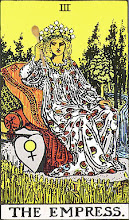Saturday, December 27, 2008
Eco-conscious coffee consumption -- shade-grown
Eco-conscious coffee consumers take notice: U of M researchers have found that shade-grown coffee benefits birds and general biodiversity in coffee plantations where overhanging trees are allowed to remain. Though the article here notes the trendiness of shade-grown coffee, I have to admit that I'd never heard about this issue and this was the first I'd ever known about this aspect of coffee growing practices. I'll definitely be paying attention to this in the future, and looking for shade-grown coffee.
Wednesday, December 24, 2008
The caramels that melt hearts; the stuff of Christmas legends

Some family recipes have rather mysterious origins. This old timer made its way into the Zion Lutheran Church cookbook in the mid-1950s in North Germany Township, Minnesota, thanks to my great-aunt, who called it "Amy's Caramels." Who Amy was, and where Artis found the original recipe that Grandma Ethel and Great-Aunt Lorraine made every year, is unknown to me. All I know is that it has become a family tradition to make these caramels every year at Christmastime, since they were the favorite among the fudge, divinity, and various other candies that Grandma made every year for us kids.
There is nothing healthful in the slightest about the ingredients; nonetheless, this is the kind of recipe that could get you a marriage proposal. No, really. Just make sure you have a candy thermometer, a long-handled wooden spoon (burns from hot sugar HURT, trust me) and a lot of energy to stir, because it'll keep you standing over the pot for close to an hour. It'll be worth it. They make an unforgettable gift for family and friends, if you can relinquish the idea of eating the whole pan yourself.
Old-time Homemade Caramels
- 2 cups white sugar
- 2 cups white corn syrup
- 1 pinch salt
- 4 tablespoons butter
- 4 cups whipping cream (or 2 cups whipping cream and 2 cups half and half)
- 2 teaspoons vanilla
- 2 cups chopped walnuts (we usually add even more than this, since we're a nutty bunch)
- Combine first four ingredients and just 2 cups cream.
- Bring to boil, stirring constantly with a wooden spoon (don't use plastic; it will MELT in the hot sugar, and metal will require using a potholder, since this mixture is going to get HOT), lower heat to medium and take care not to scorch. Bring to soft-ball stage on candy thermometer.
- Slowly, while continuing to boil, add remaining 2 cups cream (or half & half), stirring constantly.
Continue to stir and cook until candy makes a firm pliable ball when dropped into a saucer of cold water (about 45 minutes entire cooking time).
- Add vanilla and nuts and pour into a well-buttered 9x13-inch pan.
- Cool, then cover and refrigerate.
- When cool, cut into squares and wrap individual pieces in squares of waxed paper.
- Keep refrigerated until just before serving (about 30 minutes)
The results of this particular cooking adventure got rave reviews from friends at my New Year's party. Particularly beloved were those on which we sprinkled my sister's fleur de sel, a coarse salt from France that transforms the sweet to . . . transcendental.
Blackberry Scones -- Easy recipe with photos

- 4 cups flour
- 4 tablespoons sugar
- 2 tablespoons baking powder
- 1/2 teaspoon salt
- 1 cup organic butter or margarine
- 1 cup milk (I recommend whole organic milk; I mixed skim milk and half & half because we had no whole milk)
- 4 organic eggs, beaten
- Zest of one orange
- 1 cup, more or less, of blackberries or boysenberries
- In a large bowl, mix the dry ingredients (flour, sugar, baking powder, and salt).
- With a pastry blender (or two forks), cut the butter into the dry ingredients, until they look like crumbs.
- In a separate bowl, combine milk, eggs, and orange zest.
- Add milk-egg mixture to the main bowl and stir until the dry ingredients are just combined (do not overbeat.)
- Carefully fold in the blackberries to avoid bruising the fruit unnecessarily (the more blackberry juice gets mixed into the batter, the darker the color of the batter will be).
- Using a large spoon, scoop scone mixture onto baking sheet.
- Sprinkle lightly with extra sugar (I like coarse raw sugar for this purpose).
- Bake at 425 for 20-25 minutes, or until they are golden.
- Makes a dozen large scones.
- Scones are deliciously light and biscuit-like, with a hint of sweetness without being overly sweet. They are traditionally served with English clotted cream and jam; another delicious alternative is jam and creme fraiche (as seen below).

I realize this is more of a summer recipe, but we had blackberries from COSTCO and I was having a hankering for some scones to go with our coffee this morning. What a treat!
(Thanks, Karen Winters, for the original recipe I modified for pure delight!)
Friday, December 5, 2008
Subscribe to:
Posts (Atom)



